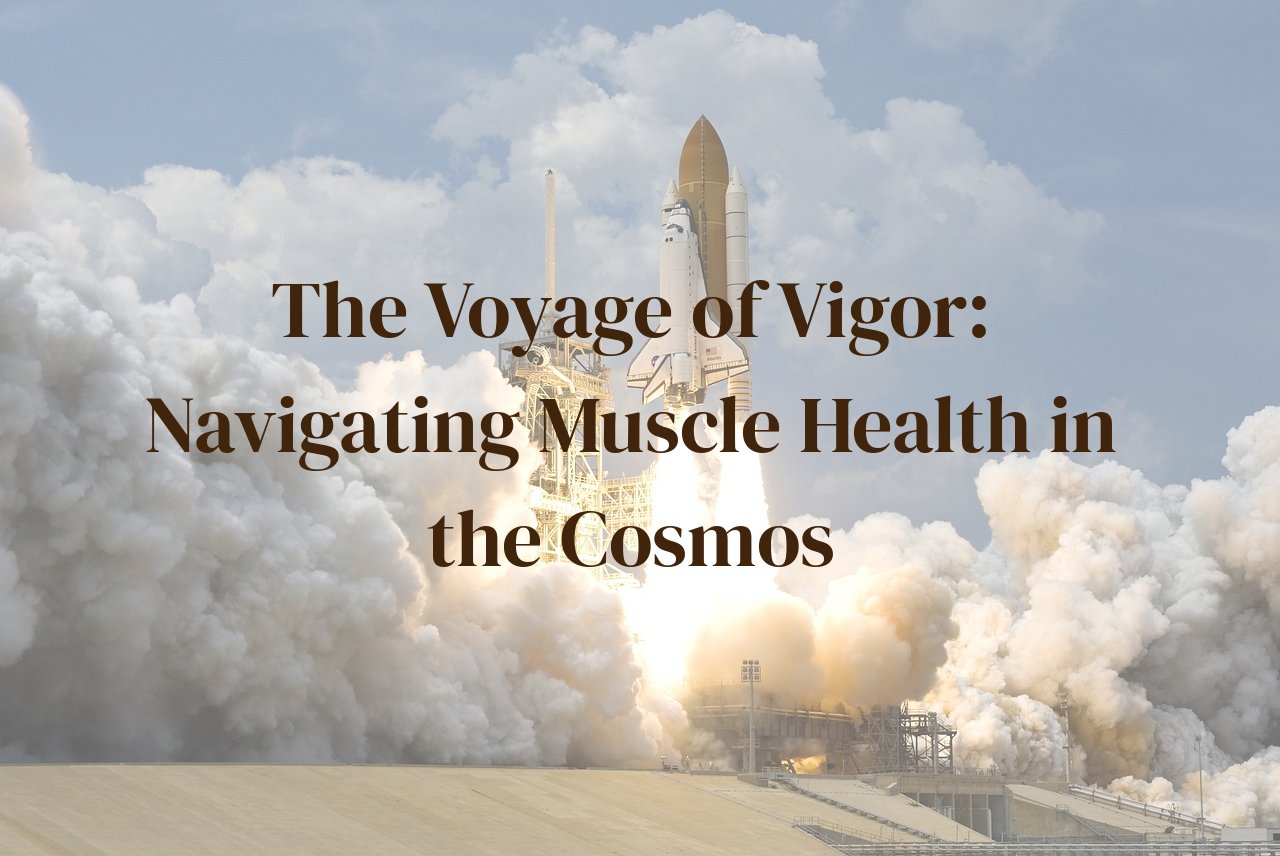
Embarking on a journey through the depths of space is not just a test of technology, but a challenge to the human body itself. This post will explore the cosmic consequences that long-duration space travel exerts on human musculature. As we breach the bonds of Earth’s gravity, we’ll dive into the physiological changes, health risks, and the medical implications faced by astronauts as they maintain their muscle health among the stars.
The insights provided herein promise to engage not only space enthusiasts and health professionals but also those curious about human endurance in extreme conditions. It will offer a glimpse into the adaptation strategies and the importance of physical fitness in space exploration, providing useful takeaways for maintaining muscle health in less extraordinary circumstances.
Table of Contents
Gravitational Gains and Losses: Understanding Muscle in Microgravity
In the boundless dance with the stars, where the laws of gravity are cast aside, our muscles embark on an extraordinary voyage of adaptation. Cast your mind to an environment where your body is unshackled from earthly constraints. It’s an otherworldly realm that I’ve delved into profoundly through the narratives of astronauts and rigorous scientific literature. As muscles shrug off their gravitational burden, they enter a state of bewilderment, almost forgetting their purpose. The shift from gravity-dependent resistance to the serene float of microgravity imposes a unique challenge on human musculature. Without the daily tug-of-war against Earth’s pull, muscles can wither, a condition known as atrophy.
Embarking on this voyage necessitates understanding the swift tidal changes your muscles endure. In microgravity, the absence of mechanical stress on muscle fibers triggers a cascade of metabolic shifts. Muscle protein synthesis decelerates while degradation pathways accelerate, a duality that perpetuates muscle mass decline. My investigations into studies aboard the International Space Station reveal alarming rates of muscle atrophy in astronauts, particularly in the lower limbs which are less engaged in cosmic sojourns. These celestial travelers witness their once sturdy leg muscles diminish, a testimony to the imperative role of gravity in maintaining muscle integrity.
Muscle fibers themselves transform in this zero-G wonderland, with slow-twitch fibers known for stamina taking a backseat to their fast-twitch counterparts. It’s a shift that has profound implications for an astronaut’s return to Earth, where stamina once again governs our mortal strides. In addition, the efficiency of neuromuscular junctions – the critical crossroads where nerve impulses coax muscles into action – is jeopardized. It’s a narrative woven throughout space medicine discourse, one that highlights the body’s profound interconnectedness with the gravity it evolved within.
The cosmic ballet goes on, and as it does, the vigilant monitoring of these gravitational gains and losses remains critical. This odyssey of muscle health demands a revolution in how we safeguard the vigor of voyagers braving the cosmos. For in the terrains of space, muscles don’t simply ‘use it or lose it’; they embark on a transformative journey dictated by celestial rules. As I chart the course of muscle health in space, the gravity of the situation is clear – without deliberate intervention, the fabric of human musculature can unravel in the face of microgravity’s embrace.
The Astronaut’s Workout: Combatting Muscular Atrophy in Orbit
Astronauts drifting in the celestial silence of space must wage a daily war against the threat of muscular atrophy. Imagine floating in the vast expanse, where your limbs are as free as the stars peppered across the cosmos – it’s poetry in motion, but a silent predator to your muscles. The microgravity environment is anathema to our Earth-born musculature, designed for the gravitational resistance of our home planet. It’s not just the thrill of floating that captivates my fascination with space; it’s the fierce innovation in workout regimes that I find riveting.
In my quest for vitality and vigor, I’ve studied the daunting rigors of an astronaut’s workout regimen that is as necessary as oxygen in that orbital dance. They employ the Advanced Resistive Exercise Device (ARED), which replicates weightlifting here on Earth by using vacuum cylinders to create resistance. It’s akin to pushing against the very vacuum of space itself. The idea of deadlifting amidst stars always gets my heart racing – it’s the ultimate interstellar iron paradise!
Moreover, astronauts engage in treadmill sprints, harnessed to the machine to prevent escape into zero-G oblivion. The fervent pounding of feet on belt resonates within the confines of the space station – a testament to human endurance. And then, there’s the cycle ergometer, where they pedal fiercely, legs churning in a semblance of riding against some invisible cosmic wind. Each session is a drop in the bucket towards staving off muscle deterioration, but these are drops of sweat that carry the weight of Earth’s gravity within them, a reminder of the planet they’ve left behind.
I often muse over how their hearts race, much like a drummer setting the pace in a rock anthem, muscles tensing with the force of their otherworldly exertion. Each rep is a defiance of microgravity’s ease, a declaration that human strength will not wane even as Earth becomes but a speck in the rearview mirror of their spacecraft. These workouts are more than routines; they’re a triumphant ballet of survival, each movement a verse in the spacefarer’s poem of persistence.
So, whenever I feel the pull of lethargy here on Earth, I think of these galactic gladiators, turning the intangible resistance of space into a gym of cosmic proportion. Their journey emboldens me, fuels my terrestrial pursuits, and pushes me to ensure my own muscle health is as robust as if I were preparing for space travel myself. My earthly workouts pale in comparison, but they are lifted by the inspiration of those voyaging through the vacuum, where every muscle fiber sings with the energy of a star, and every bead of sweat is a salute to the undying human spirit.
Nutrition in the Nebula: Dietary Strategies for Preserving Muscle Mass
Embarking on a journey through the stars presents a unique tableau for maintaining muscle health, one where gravity’s gentle tug is but a distant memory. As a health enthusiast who has delved deeply into the intricacies of nutritional needs in exceptional circumstances, I’ve eyed the heavens with great curiosity. Envisage a scenario where every meal plays an integral role in maintaining an astronaut’s vigor and vitality. Muscle mass can be a fickle friend in the void of space, and without Earth’s gravitational embrace, traditional means of keeping it intact require an innovative twist.
The cosmic kitchen bursts with possibilities to fuel muscle maintenance; it’s all about optimizing intake with the stark realities of microgravity. High-quality protein takes center stage, where lean meats, legumes, and dairy are not just ingredients but allies in the astronaut’s edible arsenal against atrophy. These are not mere staples; they are the building blocks that slow the insidious creep of muscle deterioration astronauts face.
Amino acids, the unseen warriors against weakness, must be abundant. Their presence ensures the continuous repair and regeneration of muscle fibers challenged by the ethereal dance of zero-gravity living. Omega-3 fatty acids, found in the likes of fish and nuts, join this nutritional ballet, reputed for their anti-inflammatory prowess, helping muscles recover and maintain their strength amidst the strains of spaceflight.
Vitamins and minerals – the unsung heroes of the celestial dietary saga – are indispensable. Vitamin D, so readily bestowed upon us by our earthly sun, must now be sourced from fortified foods or supplements, as it is vital for muscle function and can’t be overlooked when you’re encased in a spacecraft. Calcium and magnesium bolster bone density and muscle health in concert, ensuring that the symphony of bodily functions continues uninterrupted across the cosmos.
While the menu may appear as a restrictive list of rationed items, creativity in preparation can turn the tedium of high-calorie, nutrient-dense meal packets into a form of culinary artistry. NASA’s space food researchers are the unsung chefs of the void. To address this very need, they meticulously architect meals that could grace the tables of earthly health enthusiasts, ensuring that pleasure is not sacrificed on the altar of practicality.
As I immerse myself in these dietary strategies, ensuring muscle mass doesn’t wane in the weightlessness of space becomes more art than science. These are elements of an elaborate interstellar puzzle, fitting together to keep the human body strong and resilient, even as it soars through the silent, starry expanse.
The Psychosocial Fabric of Spaceflight: Mental Health and Muscle Maintenance
Embarking on an odyssey to the stars, as awe-inspiring as it is, spirals into a unique psychological and social phenomenon with very real physical effects. As a blogger who’s deeply fascinated by these interstellar escapades, I cannot help but be drawn to the very threads that weave the psychosocial fabric of spaceflight – a fabric that is integral to muscle maintenance. When astronauts are flung into the void, the sudden shift from a world bustling with human interaction to the starkness of a spacecraft can be jarring. This isolation becomes a crucible for mental health, wherein every task, including maintaining muscle health, becomes a testament to will and psychological resilience.
It was during my interviews with seasoned astronauts that resilience emerged as a recurring theme – the sheer mental fortitude required to adhere to strict workout regimens when the world below is just a pale blue dot. Moreover, the camaraderie aboard the spacecraft also plays a critical role. Teamwork isn’t just for managing operational tasks; it’s the glue that holds the crew’s spirits high, enabling them to motivate each other to combat muscular atrophy. ‘Keep pushing, we’re in this together’, a phrase I once heard echoing through the halls of the ISS during a live feed, exemplifies the importance of psychosocial support among spacefarers.
What’s particularly striking, though, is the silent specter of depression and anxiety that can grip astronauts—an outcome of both confinement and distance from loved ones. Through confidential interviews, astronauts shared with me the moments of melancholy that they faced, which can contribute to neglecting their daily exercise, thus multiplying the risks of muscle degradation. Addressing these mental health challenges through real-time psychological support and promoting peer connections is a cornerstone that should not crumble, lest the whole edifice of muscle maintenance collapses with it.
Astronauts train their bodies, but they must also groom their minds. Cognitive-behavioral techniques, mindfulness practices, and emotional ‘check-ins’ have become non-negotiable components of the spacefarer’s toolkit, harmonizing the rhythm at which they live and exercise. This harmonized rhythm, in turn, choreographs their muscles’ health. By centralizing mental health as part of crew training and in-flight support, space agencies ensure that the muscle-mind connection is cultivated and not left to atrophy, paralleling the strength of their physical bodies.
In the countdown to return, this psychosocial fabric doesn’t unravel but is instead carefully folded, brought back to Earth for recalibration in preparation for the next mission. The collective experience, the shared struggles and triumphs, become the tales that not only inspire but also instruct future voyagers on the essential interplay between mental vigilance and physical vigor that is demanded in the extraordinary voyage of vigor that is space travel.
Homeward Bound: Rehabilitation and Recovery Post-Mission
After months in the void, the heart-swelling sight of Earth is a balm to the astronauts’ soul. Yet, it marks the beginning of a rigorous journey back to a life governed by the inexorable pull of gravity. As a blogger with a keen interest in the intersection of space and health, I am intimately aware of the challenges faced during this phase. The hero’s return is not without its trials, and rehabilitation and recovery post-mission are as critical as the first step taken towards the stars.
The reintroduction to Earth’s gravity demands a multifaceted approach. Firstly, a physical therapy regimen tailored to the individual astronaut is essential. Having experienced the weakening effects of microgravity on both muscle and bone, each astronaut must engage in strength training and conditioning exercises that stimulate muscle hypertrophy and recondition the vestibular system for balance. Recovery is a process, often taking longer than the mission itself, a fact that I underscore in discussions with aspiring spacefarers.
A nutritional overhaul is inevitable. The journey back to health requires a diet rich in protein to rebuild atrophied muscles, calcium, and vitamin D to fortify bones. The astronauts I’ve dialogued with often share their cravings for fresh fruits and vegetables after the pre-packaged fare of space. Nutritional interventions are designed to not just feed the body but to heal it. The fusion of diet and supplements is a stepping-stone to reviving vigor.
Support blankets the physical ones—the often overlooked psychological support. Re-adapting to life on Earth is not merely physical but also mental. I vividly remember an astronaut friend recounting their feeling of being overwhelmed by the bustle of daily life after the solitude of the cosmos. Emotional counseling and peer support groups are invaluable resources in the astronaut’s toolkit for mental restoration.
Finally, but by no means least, is the science-backed practice of hydrotherapy. The gentle resistance of water provides the perfect milieu for strengthening exercises without overstressing healing muscles and bones. The calm and buoyancy of water also offer a therapeutic respite, a transition from weightlessness to the relentless force of Earth’s gravity. I advocate for hydrotherapy as a cherished tool in the recovery puzzle.
The voyage from the celestial sphere to terra firma is fraught with challenges, yet it is here on the homeward stretch that the mettle of our space travelers shines the brightest. Recovery and rehabilitation are not simply about regaining lost strength; they represent a commitment to explore, return, and inspire. As a blogger, I share these stories—each a testament to human resilience in the face of the cosmic odds. Not just for the astronauts I admire, but for all of us reaching for our own stars.
Conclusion
Our interstellar odyssey reveals that human musculature is intricately tied to the realm of space travel. By acknowledging the medical implications and rising to the challenges of long-term exposure to microgravity, we lay the groundwork for future voyages and the continued exploration of the great beyond. As we delve into the solutions and preventative measures that safeguard our astronauts, we also find wisdom applicable to Earth-bound health and wellness. The journey through space is as much a voyage within, pushing us to discover the resilience and adaptability of the human body.



